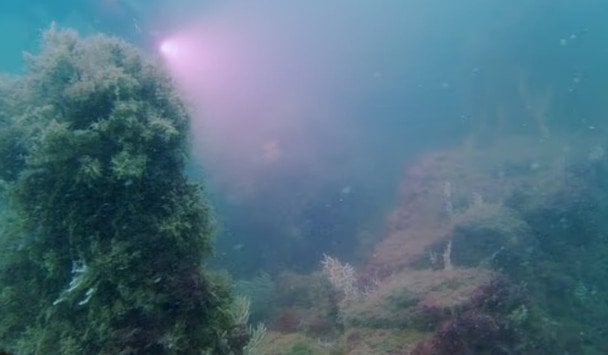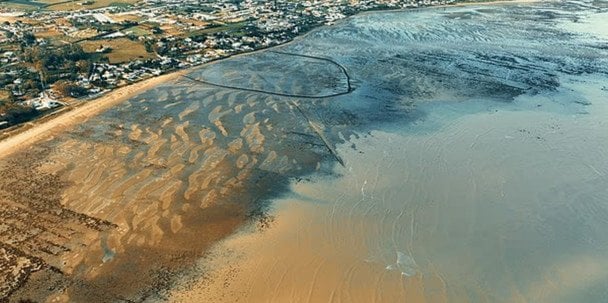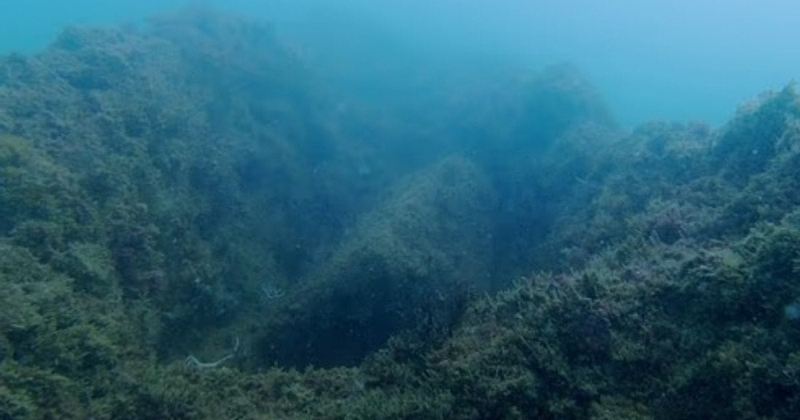Archaeologist Michael Donnellan believes he has discovered the lost city of Atlantis off the coast of Cadiz, Spain. He has compiled his findings into a documentary filled with photo and video evidence.
A scientist has described an advanced civilisation that built majestic temples and massive harbour walls before being swallowed by the sea more than 11,600 years ago. Now he believes he has found Atlantis just two miles off the coast of Cadiz, Spain.
Archaeologist Michael Donnellan told the Daily Mail about this.
A unique discovery by a scientist
While many scientists dismiss Atlantis as pure myth, Michael Donnellan says the lost city is real and has underwater footage to prove it. He made the bombshell last month at the Space Summit, a conference in North Carolina devoted to alternative history, where he presented his documentary.
Donnellan spent eight years surveying the coast of Cadiz using sonar and leader. He eventually discovered long linear structures etched into the ocean floor that formed a series of huge concentric circular walls.
The outer wall was the most damaged, as if it had been hit by a powerful tsunami coming from the sea. The second and third walls were completely displaced, and scans showed that they were split in two.

Between the walls were elaborately carved canals, and in the center were rectangular ruins, echoing Plato's description of the Temple of Poseidon. This formed what is believed to be the capital of Atlantis.
Plato's works describe an advanced civilization that built majestic temples and powerful harbor walls before being swallowed by the sea more than 11,600 years ago.
“We call it the great ancient Atlantean culture, it's much easier to believe. I think that's the way for people to gradually, over time, take the word 'Atlantis' much more seriously,” the scientist said.
In scenes from the documentary, Donnellan and his crew dive into murky waters and quickly come face to face with the first wall. He described the submerged structure as having sharp right angles, flat surfaces and a uniform width, several feet thick.
According to the archaeologist, this literally corresponds to everything Plato wrote about. It came from across the straits in the region known to the Greeks 2,400 years ago as Hades. We know very well today that Gades is modern Cadiz, the oldest city in Western Europe.
Plato's story of Atlantis is mentioned primarily in the Timaeus and Critias, written around 360 BCE. He describes a powerful island nation located beyond the Pillars of Heracles, the ancient name for the Strait of Gibraltar, in the Atlantic Ocean opposite the Mediterranean Sea.
In the Critias, Plato writes that Atlas, the first king of Atlantis, ruled with his twin brother, Gadeir. Together, they divided the island's territory, controlling land rich in resources, palace architecture, and an intricate network of canals and harbors.
The massive structures were found about 65 feet below the surface. The team also found long, linear structures carved into the ocean floor. But as legend has it, the Atlanteans became greedy and corrupt, so the gods punished them. Plato wrote that the entire island was wiped off the face of the earth by a massive earthquake and flood, disappearing beneath the waves.
The archaeologist acknowledges that historians don't know what led to these terrible events, but pointed to the idea of the Younger Dryas, a controversial period thought to have ended around 11,600 BC.
Over the course of 20 dives, Donnellan and his team found even more compelling clues: smaller walls that had collapsed into the seafloor, channels cut into the sea, and scattered boulders that he believed had been tossed from their original construction site. The crew came across huge rocks, about half the size of a small car, that were perfectly rectangular.
“There are a lot of artefacts that are consistent with an ancient metropolis. But the style of construction is definitely not Roman or Venetian. And at that distance and depth, that would make it an older site,” Donnellan said.
According to Plato, Atlantis was 3,000 stadia long and 2,000 stadia wide, equal to 341 miles by 227 miles – about the size of Nevada.

Donnellan scanned just one-quarter of the city, finding that their findings matched the old measurements exactly. Near the upper acropolis, the scans showed the remains of isolated structures close to buildings. But in the center, the scientist noticed a rectangular formation of massive proportions, perfectly oriented in relation to the cardinal directions.
Plato describes Atlantis as a geometrically planned city with concentric circles of land and water centered around a central acropolis. He also notes that the central plain was rectangular and generally straight and oblong in shape, and oriented north-south.
Earlier we wrote that scientists continue to study the ancient city founded by Alexander the Great. The city was found at a depth of 50 meters at the beginning of the 21st century off the coast of Egypt. The Greeks called it Heraclion, the Egyptians – Thonis. The city began to be considered a legend after it sank under water 1,200 years ago.
Little by little, scientists are learning more and more about this mysterious city. It is shrouded in legends associated with Troy, the beautiful Helen and her beloved Paris.
However, it has not yet been discovered what caused Thonis-Heracleion to disappear underwater. Scientists have put forward several versions, including an earthquake, rising water levels, and a landslide.

